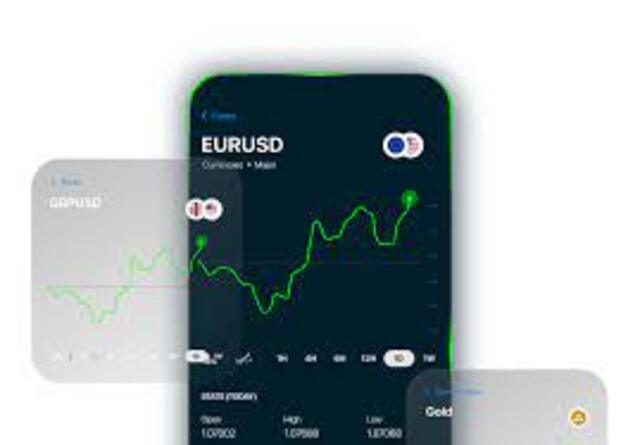SBI-US
Business & Finance

Beyond the Net Income Definition: How Earnings Metrics Drive CFD Trading Decisions

For many traders, earnings season is a key event that sets the tone for short-term market volatility and fresh opportunities. While traditional investors often start with bottom-line figures like net income, Contract for Difference (CFD) traders tend to look deeper. Understanding why a company beat or missed expectations often reveals more actionable insights than the headline number alone.
Earnings Metrics that Matter to CFD Traders
EPS, calculated by dividing net income by the number of outstanding shares, is one of the most closely watched figures by both institutional and retail traders. In CFD trading, what often matters more than the absolute EPS value is how it compares to market expectations.
A surprise—either positive or negative—can trigger sharp intraday price swings, which is exactly what CFD traders look to exploit. Even a penny’s deviation from consensus forecasts can send prices soaring or plummeting, making EPS surprises a key catalyst for short-term trades.
Operating Income and EBIT
Operating income strips away much of the noise found in net income by focusing solely on revenues minus operating expenses. EBIT (Earnings Before Interest and Taxes) goes one step further by isolating a company’s ability to generate profits from its core operations, independent of capital structure and tax policies.
These metrics are invaluable for CFD traders because they give a clearer picture of how well a business is performing before accounting for non-operational factors. In sectors like manufacturing or retail—where cost control and operational efficiency are essential—strong EBIT figures can support long or short CFD positions depending on the trend.
EBITDA
EBITDA (Earnings Before Interest, Taxes, Depreciation, and Amortization) further removes accounting complexities to provide an even cleaner view of a company’s operating cash flow. While not a measure under standard accounting principles, it’s widely used to assess profitability, particularly in capital-intensive industries.
CFD traders often rely on EBITDA to compare companies with varying asset bases or to evaluate takeovers and restructurings, where depreciation costs can distort earnings. A rising EBITDA trend can signal underlying business strength, even if net income is temporarily negative.
Free Cash Flow (FCF)
Unlike net income, which can be influenced by accounting choices, free cash flow reflects the actual cash a company generates after capital expenditures. This metric shows whether a firm has enough liquidity to reinvest, pay dividends, or reduce debt, factors that significantly impact market perception.
For CFD traders, strong FCF suggests a stable or improving outlook, which may warrant bullish positions. Conversely, declining free cash flow, especially if it contradicts earnings growth, might signal deeper issues and open short-selling opportunities.
Adjusted Earnings / Non-GAAP Measures
Many companies now report adjusted earnings—customised figures that exclude one-time costs or income—to highlight what management sees as the company’s “true” performance. These non-GAAP metrics can include adjustments for restructuring charges, asset sales, or litigation expenses.
While potentially useful, these figures require careful scrutiny. CFD traders monitor how the market reacts to both GAAP and adjusted earnings, and how those differences affect price sentiment. A strong adjusted EPS may buoy the share price even if net income fell, offering an exploitable divergence.
How Earnings Metrics Impact CFD Trading Decisions
Earnings season is a key volatility driver, often sparking sharp price movements within moments of a report. For CFD traders, the focus isn’t just on the earnings figures, but on how they compare to market expectations. A record profit that misses forecasts can still trigger a sell-off. Traders often position themselves before earnings based on anticipated surprises or act quickly post-release once the data confirms direction.
Different sectors respond to different metrics: tech stocks react strongly to EPS and revenue growth, while energy and utilities hinge more on EBITDA and cash flow. In cyclical sectors, operating margins and forward guidance matter most. Post-earnings sentiment also plays a major role—positive surprises can fuel momentum through rising volume and institutional buying, offering opportunities for short-term gains.
Traders frequently backtest historical earnings reactions to spot patterns, like price gaps on surprises or reversals after initial spikes. Combining these insights with technical indicators such as RSI or moving averages helps refine entries and exits, reinforcing trades with both fundamental and technical alignment.
Risk Management Considerations
While earnings reports can offer lucrative opportunities, they also bring risk. Volatility can cause spreads to widen and slippage to increase, making it harder to get in or out of a position at the expected price.
CFD traders need to account for these risks by adjusting position sizes, setting protective stop-losses, and being aware of maximum leverage exposure. For high-impact events, some may even hedge using correlated instruments or reduce exposure in the lead-up to a release.
Having a disciplined risk management plan is crucial, especially when trading during earnings seasons, where markets can behave irrationally.
Conclusion
The net income definition is just the beginning. For CFD traders, real edge lies in digging deeper into the numbers—understanding not only what a company earned, but how and why.
By analysing earnings metrics such as EPS, operating income, EBITDA, free cash flow, and adjusted earnings, traders can form more complete pictures of a company’s health and anticipate how the market might react.
As earnings season continues to be a powerful driver of market volatility, CFD traders who integrate these metrics into their strategy will be better positioned to identify opportunities, manage risk, and make confident, informed decisions.